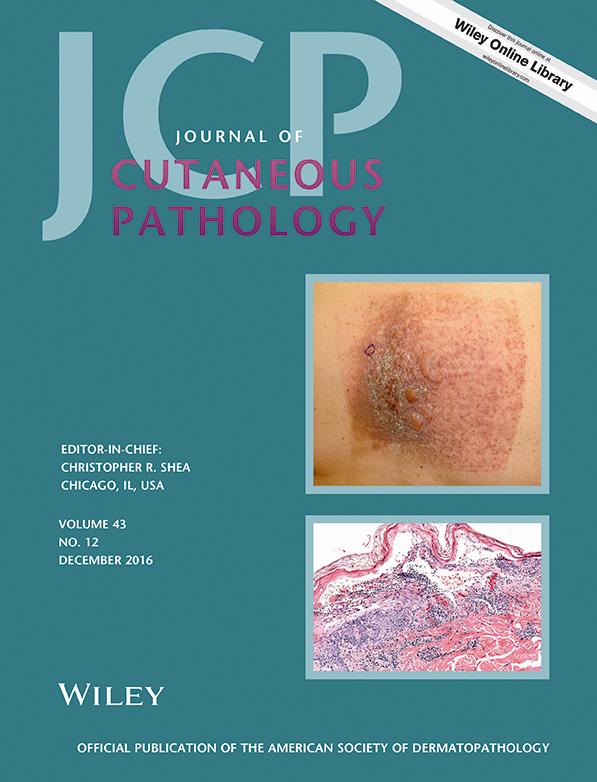Cutaneous involvement of pre-existing Rosai–Dorfman disease via post-herpetic isotopic response
Abstract
We report the case of a patient with a long-standing history of extranodal, sinus histiocytosis with massive lymphadenopathy (Rosai–Dorfman disease) and no evidence of original cutaneous involvement as well as a history of herpes zoster of the left flank with post-herpetic neuralgia who went on to develop multiple, round-to-oval, red-brown, atrophic macules and thin papules at the sites of herpes zoster scars on the left flank. Histopathology showed a dense nodular infiltrate of lymphocytes with some plasma cells and numerous large pale-staining histiocytes (S100+/CD68+), consistent with Rosai–Dorfman disease. This case showed exclusively cutaneous involvement, as demonstrated by otherwise normal physical examination, laboratory evaluation and imaging. This is the second reported case of Rosai–Dorfman disease occurring at the site of zoster scars, and to our knowledge this represents the first case report of cutaneous involvement of pre-existing Rosai–Dorfman disease via post-herpetic isotopic response (Wolf's isotopic response).




